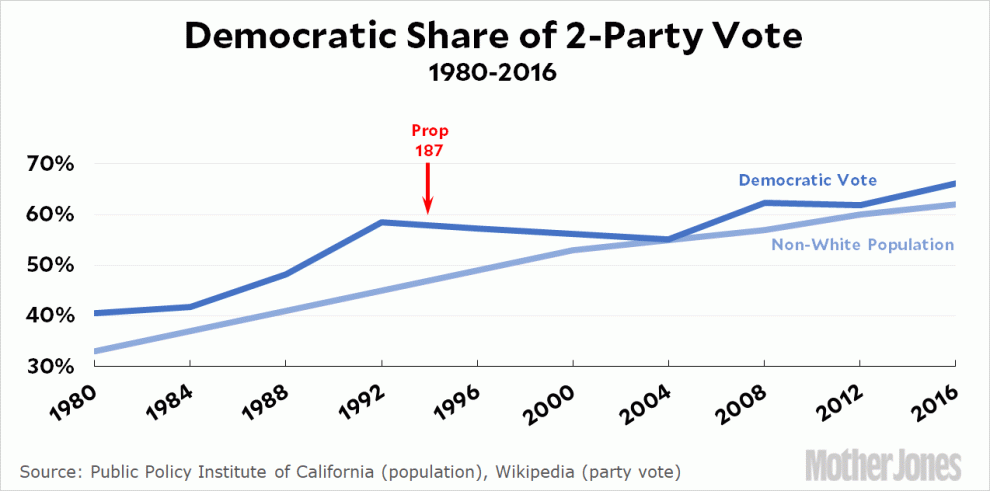In 2020, Democrat Candace Valenzuela, who was running to become the first Black Latina member of Congress, lost the closest congressional race in Texas to Republican Beth Van Duyne.
She was considering running again in 2022 for Texas’ 24th congressional district, once a stronghold of suburban Republicanism between Dallas and Fort Worth, but when she saw the redistricting maps for the US House released by state Republicans last week, “it was viscerally shocking to me,” she said.
Biden carried the 24th by five points in 2020, as the population of people of color surged in the suburbs and moderate white voters turned away from Donald Trump, but Republicans had transformed the district into a bastion of white Trumpism.
The Dallas–Fort Worth area has grown faster than any part of Texas, with more Latinos living there than in the entire state of Colorado, notes Michael Li of the Brennan Center for Justice. Yet instead of creating a new majority-Latino congressional district, Republicans chopped up diverse cities like Carrollton, which is 60 percent nonwhite and where Valenzuela became the first Black woman to win a school board seat in 2017, into five different congressional districts to undermine minority voting power. She used to describe her district as a donut circling Dallas–Fort Worth International Airport. Now she calls it a “butterfly shrimp,” with its body in suburban red areas by the airport and its tail weaving in and out of the most conservative parts of Dallas.
“They weren’t just trying to extract people of color who are trending Democratic in order to protect Beth Van Duyne or other Republicans,” Valenzuela said. “They were trying to completely and totally neutralize their voting power. This is something that is happening across the state.”
Through the redistricting process, Texas Republicans are building a sea wall against demographic change—an early indicator of how the Republican Party nationally is responding to momentous population changes not by reaching out to growing communities of color but by diluting their voting power. At a time when Texas is becoming more diverse and Democratic, the new maps drawn by Republicans for congress and the state legislature would make the state’s political representation far whiter and more Republican, all but ending competition at the very moment when ascendant Democrats are finally making the state competitive.
White voters have been a minority in Texas since 2004 and over the past decade 95 percent of the state’s growth came from communities of color, but the GOP’s proposed congressional map increases the number of white Republican districts and decreases the number of majority-Latino and majority-Black districts. It packs minority voters into as few urban areas as possible in cities like Austin, Dallas, and Houston to limit their representation, while spreading out the rest among deeply red exurban and rural areas to nullify their influence. Despite gaining nearly 2 million Hispanic residents and more than 500,000 Black residents since 2010, Republicans didn’t draw a single new majority-Latino or majority-Black congressional district. Instead, the two new House seats the state gained due to population growth were given to majority-white areas in Austin and Houston.
Republican House candidates won 53 percent of the statewide vote in 2020 but would hold a projected 65 percent of seats under the new lines, which were approved by the state Senate redistricting committee on Monday. The number of safe GOP seats would double, from 11 to 22, while the number of competitive districts would fall from 12 to just one. Nine Texas House Republicans, including Van Duyne, currently hold seats in districts won by Biden or where Trump won by five points or less, but they’re all drawn into districts that Trump would have carried by double digits. This will push state and national politics even further to the right, as Republicans worry more about primary challengers than Democratic opponents.
“Texas is one of the most diverse states in the country but you wouldn’t know it by looking at this map,” said Li. “It totally tries to kick the can down the road on the growth in the state’s minority population.”

Texas’ 24th Congressional district in current form vs proposed GOP plan. The GOP map removed diverse Democratic areas and adds in whiter Republican ones.
Mother Jones illustration; District Viewer; Congress.gov
The 2020 race in the 24th was a battle between two candidates representing very different visions of the state: its diverse, Democratic, progressive future against its white, Republican, reactionary present and past. While Valenzuela rallied voters of color and appealed to disaffected Republicans, Van Duyne was best known as a former mayor of Irving who rose to prominence in tea party circles after falsely accusing local Muslim imams of trying to implement Shariah and urging the Texas legislature to pass an “anti-Shariah” bill. She befriended Michael Flynn in 2016 and joined the Trump administration as an official with the Department of Housing and Urban Development.
Valenzuela lost by just 4,500 votes, a heartbreaking defeat for Democrats, but said “we got closer than we had been in a long time.”
Van Duyne called her victory “Nancy Pelosi’s most bitter loss” and styled herself as part of a “conservative squad” to take on progressives like Alexandria Ocasio-Cortez. Once in Congress, she voted against certifying the election results in Pennsylvania, was fined for twice violating the House’s mask mandate, and during a recent debate over abortion held a baby doll in the shape of a fetus while speaking on the House floor. The Atlantic called her “the new face of Trumpism in Texas.”
Van Duyne’s extreme voting record should have made her vulnerable in a fast-changing swing district, but Republicans protected her by increasing the percentage of white voters in the district by 15 points, from 59 percent to 74 percent. The district has gone from favoring Biden by 5 points to favoring Trump by 12 points. The partisan lean of the district has shifted to the right by nearly 20 points, more than any district in the state.
Valenzuela’s home was drawn out of the district, which she suspects was intentional, as was the home of Democratic state Rep. Michelle Beckley, who announced a challenge to Van Duyne in July. Van Duyne’s home was narrowly kept in the district, but predominantly Latino communities in Irving that she used to represent were excised to make the seat more Republican.
“If I were to run in the current iteration of TX-24, I’d be surprised if I made it to the high 40s,” Valenzuela said. “The way that 24 looks now, I don’t think I’d want to put my family through it.”
The same level of gerrymandering is a defining feature of the maps drawn for the state legislature, where Republicans are desperately trying to insulate themselves from accountability after passing a flurry of extreme laws this year, such as a six-week abortion ban, permission for residents to carry guns without a permit, and a sweeping voter suppression law.
“Republicans are in a position to let lines and laws overwhelm demographics and ultimately the will of Texans,” Valenzuela said.
Under the GOP’s proposed map for the state Senate, 20 of 31 districts would have white majorities, even though white people make up just under 40 percent of the state’s population. The number of pro-Trump districts increases from 16 to 19.
The proposed state House map, like the congressional map, would also create more white districts and fewer districts where Black and Hispanic people make up a majority of eligible voters. The number of majority white districts would rise from 83 to 89 out of 150, while the number of Latino districts shrinks from 33 to 30, and the number of Black districts falls from seven to four. The map creates 10 more pro-Trump districts, giving the GOP close to 60 percent of seats after Democrats came close to retaking the chamber in recent elections.
Overall, white voters would control a majority in 60 percent of districts for the US House and state legislature—far above their numbers in the state.
TX-24 (D+1–>R+8) was the biggest defensive project for R's after Beth Van Duyne (R) gritted out a win while Biden carried the seat by 5. It drops blue areas of Denton and picks up North Dallas's Park Cities, previously the red heart of TX-32. pic.twitter.com/yoGCQ9h2Kz
— RRH Elections (@RRHElections) September 27, 2021
The same strategy could soon be replicated in other Southern battleground states. Republicans need just five seats to take back the House and could accomplish this through gerrymandering in Texas, Georgia, Florida, and North Carolina.
Similar to Texas, all of Georgia’s growth in the last decade came from communities of color. The state gained 1 million residents—including 350,000 Black residents, 270,000 Latino residents, and 160,000 Asian American residents, while the white population shrank—but redistricting maps released for Congress on September 27 by Republican Lt. Gov. Geoff Duncan and the chair of the state Senate redistricting committee targets Black political representation.
The draft map takes aim at Rep. Lucy McBath, a Black Democrat who represents Newt Gingrich’s former congressional district. McBath, who became a crusader against gun violence after her teenage son Jordan Davis was murdered by a white man in 2012, would see her suburban Atlanta district go from one that Biden carried by 11 points to one Trump won by six. The most diverse and Democratic parts of DeKalb County, which Biden won with 83 percent of the vote, would be removed, and Forsyth County, a hotbed of white Republicanism one hour north of Atlanta where Trump won 66 percent of the vote, would be added in.
Forsyth County has a particularly ugly racial history—in 1912, following the lynching of a Black man, white residents forced all 1,000 Black residents to leave the county. When thousands of civil rights activists led a march in 1987 to expose what had happened, white residents, including members of the Ku Klux Klan, shouted, “Nigger, go home!” at them and held signs that said “Keep Forsyth white.”
The proposed congressional map also targets Democratic Rep. Sanford Bishop in southwest and middle Georgia. The Black voting age population in his district would drop from 50 percent to 47 percent, which could be enough to defeat him, given how few rural white residents vote for Democrats anymore.
The map released by Duncan, a prominent critic of Trump, could be replaced by a more extreme pro-Republican gerrymander when the Georgia legislature convenes in early November to take up redistricting. It’s telling that the “moderate” plan drawn by an anti-Trump Republican still potentially eliminates two seats held by Black Democrats.
The squabbling on Capitol Hill over the Democrats’ infrastructure and spending plans has overshadowed how the Freedom to Vote Act introduced by Senate Democrats last month would ban the kind of racial and partisan gerrymandering pushed by Republicans in states like Texas and Georgia.
“If the Freedom to Vote Act was there, this map would be instantly blocked,” Li said of the Texas congressional plan.
Yet Democrats are running out of time to pass it or devise a strategy for overcoming a GOP filibuster—and could soon be powerless to stop the GOP’s takeover of the US House and state Capitols for the next decade.












